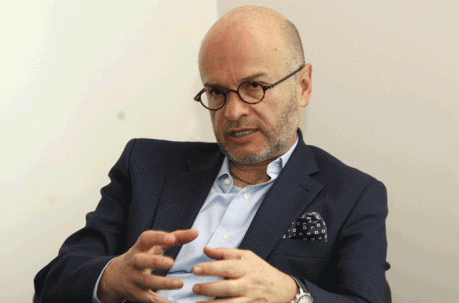Cenepa, 23 years after the war
Ecuadornews:
January 26, 1995. Ecuadorian soldiers put in motion a plan to evict Peruvian military who built a heliport in the Cordillera del Cóndor and the war between Ecuador and Peru broke out.
The bombings in that area, which today is known as the North Base, began at 5:55 p.m. For 20 minutes, Special Forces soldiers attacked the Peruvians with mortars. It was the first direct attack by the Armed Forces and early on the government authorities were awaiting this operation.
Late at night, at 7:00 p.m., the Directorate of Electronics of the Armed Forces. intercepted a telegram from Peru. In that message the Ecuadorian attack was confirmed. The soldiers who operated in other detachments heard the armed action through radio operators.
President Sixto Durán-Ballén knew about the news from the Ministry of Defense. The President supported the attack and ordered to continue vigilance on the border. On the side of Peru there was also movement. 15,000 soldiers moved to the North Low theater of operations. And they were organized under the command of General César Ramal. The Peruvians had mobilized to other points within the border.
Intelligence of the Ecuadorian Army knew that its adversaries had planned to attack national bases with heavy weapons of curved shot (artillery, mortars). The confrontations did not end. At 22:00, the Ecuadorian military received the order to attack the Peruvian soldiers who were in the Cueva de los Tayos.
The next day, the two armies mobilized more troops to the site of conflict. It is estimated that Ecuador moved about 7,000 men to fight in the month of the war. In Quito, people filled the Plaza Grande and the historic arrived: “Not a step back!”, Which immortalized the President. The speech encouraged the troops, who were led by soldiers such as General Paco Moncayo, Colonel Luis Hernández and other uniformed personnel.
The war continued and the tragic Wednesday arrived. It was a February 22nd. That day, 13 Ecuadorian soldiers died in combat. It was the day when more casualties were recorded. It was 04:30 and the troops of Peru attacked with all their potential the Ecuadorian bases, in which there were reservists and aspirants of the School of Training of Army Soldiers.
Now, 23 years later, ex-combatants from Cenepa return to the southern border. There they will be, for example, Hernández and Moncayo. The actors remember details of what happened in those days. Newspaper EL COMERCIO collected their testimonies and presents them with the positions they occupied at that time.
Alberto Dahik: Vice President
With the conflict I was always careful that the economy did not get out of hand, that we did not lose monetary reserves, that there was no panic. The Presidency had assigned me the task of collecting materials, supplies from the private company, coordinating with the private sector. 23 years later we see that this demonstrated the professionalism of the Armed Forces, the responsibility of the Government, the leadership and good sense of the President.
José Gallardo: Minister of Defense
In August 1994 I was informed of the threat of Peruvians to occupy the Alto Cenepa. There I made the decision to recommend to the Government that we defend the territory with arms. President Sixto Durán Ballén was ill in the United States and I talked to the Vice President. The next day they gave me the order to prepare the defense of the country. I met with the oldest military of each force and we settled in Twintza, Cueva de los Tayos and Base Sur.
General Paco Moncayo: Comander of Army Operations
From the beginning we organized the defense with Special Forces soldiers. In 1981, Peru attacked us like this. At that time we had conscripts. But in 95 it was different. I traveled by helicopter to Quevedo and then to Loja. From there the troops mobilized by land. The order was to defend the headwaters of Cenepa. They wanted the North Base but I made the decision to attack. We won the war widely and strategically.
Blasco Peñaherrera: Representative at the OAS
As soon as the conflict began, I requested a meeting of the foreign affairs ministers of the Organization of American States (OAS). In the body there was concern and a negative environment for Ecuador. Peru exerted very important influences. From Washington I communicated that to President Durán Ballén by telephone. In the end, the OAS was objective and before the ministers met, Peru gave in and accepted a peaceful solution.
José Ayala Lasso: High Commissioner of the UN
When the war broke out I was in Geneva. I was the UN High Commissioner for Human Rights and I obviously communicated with President Durán Ballén and offered him my help. A few days later I sent him a letter and congratulated him on the triumph of the war. I also told him that it was the ideal time to seek peace on the best terms. Then I returned to the country and started to negotiate peace. In 1998 we made it concrete and I can assure you that we never lost territory.
Heinz Moeller Freile: President of Congress
I was appointed to inform friendly countries and issue bulletins related to the reaction of the American nations, where the United States he had an almost immediate pronouncement calling for a ceasefire to sit at a table to discuss. The visit of an Ecuadorian commission to the USA was processed to seek mediation. The Americans took us to a room to show us satellite shots of the disputed area.
Carlos Larreátegui: Secretary of the Administration
I accompanied the President closely. I was his designated spokesperson especially for the conflict. I remember that statements that I issued after President Alberto Fujimori refused to allow Ecuadorians to remove the bodies of the soldiers who fell into conflict had a lot of repercussion. I said that Fujimori did not respect the peace of the dead. This had an international repercussion, because it showed its aggressiveness.
Andrés Vallejo: Defense Commission
From the National Defense Commission of the Congress we witnessed the excellent performance of our Armed Forces. The intervention of the Commission was not direct, but the deputies expedited the approval of a law that allowed the increase of the resources that the Government needed to face the emergency. Although it was a fact of triumph, like all war this was also painful. The Cenepa conflict restored national pride.
Fidel Araujo: Media Coordinator
The media around the world sent their journalists. News agencies such as EFE, Reuters and the BBC of London reached the line of attack. At first they did not believe there was a conflict. They said it was a “tongo”, but over time that changed. Ecuador gave full access to the media. In Peru that did not happen. Peruvian journalists covered the news from our territory. They found that Ecuador won the war. (I)
Source: http://www.elcomercio.com/actualidad/cenepa-guerra-peru-frontera-militares.html















